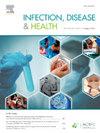Surgical implant sterilization in the Asia–Pacific region: A survey of current practices
IF 2
Q2 PUBLIC, ENVIRONMENTAL & OCCUPATIONAL HEALTH
引用次数: 0
Abstract
Background
Healthcare-acquired infections are frequently linked to contaminated medical devices such as inadequately sterilized surgical devices, especially surgical implants. To prevent inadequate medical equipment sterilization, various health organizations (eg, World Health Organization) have provided guidance on best practices related to the sterilization monitoring practices of implant-containing loads.
Methods
A survey of sterilization practices, including practices related to monitoring implant-containing loads, at facilities from seven countries in the Western Pacific Region (WPR) and three countries in the Southeast Asia Region (SEAR) was conducted to assess alignment with health organization guidelines and to elucidate factors impacting sterilization practices.
Results
Workload distribution was selected by 47 % of respondents when asked what had changed over the past year. Overall, 21 % of respondents were not monitoring each implant-containing load with a PCD (Process Challenge Device) containing a BI (Biological Indicator) with a Type-5 Chemical Indicator (CI), and 27 % of respondents had seen an implant load released prior to receiving BI results. Twenty-nine percent (29 %) of respondents had no placement guide for CIs when used in multi-level trays. Lastly, 43 % of respondents routinely performed immediate use system sterilization (IUSS), which commonly involved loaner instruments.
Conclusions
The results of this survey study indicate that inappropriate PCD usage in implant loads and frequent IUSS are challenges for some facilities in SEAR and WPR countries. Regional collaboration to produce consensus documents and educational programs may help develop strategies to standardize practice of implant load monitoring and loaner instruments. Thus, a consortium to initiate education programs for SEAR and WPR countries would be worthwhile.
亚太地区外科植入物消毒:当前做法调查。
背景:医疗保健获得性感染经常与受污染的医疗器械有关,如消毒不充分的外科手术器械,特别是外科植入物。为防止医疗设备灭菌不足,各卫生组织(例如世界卫生组织)提供了关于含植入物载荷灭菌监测做法的最佳做法指南。方法:在西太平洋地区(WPR)的7个国家和东南亚地区(SEAR)的3个国家的设施中,对灭菌做法进行了调查,包括与监测含有植入物的负荷有关的做法,以评估与卫生组织指南的一致性,并阐明影响灭菌做法的因素。结果:当被问及过去一年有什么变化时,47%的受访者选择了工作量分配。总体而言,21%的受访者没有使用含有5型化学指示剂(CI)的BI(生物指示剂)的PCD(过程挑战装置)监测每个含植入物的负荷,27%的受访者在收到BI结果之前看到了植入物负荷的释放。29%(29%)的受访者在多级托盘中使用ci时没有放置指南。最后,43%的应答者常规执行立即使用系统灭菌(IUSS),这通常涉及借用仪器。结论:本调查研究结果表明,在SEAR和WPR国家的一些设施中,不适当的PCD使用和频繁的IUSS是面临的挑战。区域合作产生共识文件和教育计划可能有助于制定策略,使植入物负荷监测和出借工具的实践标准化。因此,为SEAR和WPR国家发起教育计划的联盟是值得的。
本文章由计算机程序翻译,如有差异,请以英文原文为准。
求助全文
约1分钟内获得全文
求助全文
来源期刊

Infection Disease & Health
PUBLIC, ENVIRONMENTAL & OCCUPATIONAL HEALTH-
CiteScore
5.70
自引率
5.70%
发文量
40
审稿时长
20 days
期刊介绍:
The journal aims to be a platform for the publication and dissemination of knowledge in the area of infection and disease causing infection in humans. The journal is quarterly and publishes research, reviews, concise communications, commentary and other articles concerned with infection and disease affecting the health of an individual, organisation or population. The original and important articles in the journal investigate, report or discuss infection prevention and control; clinical, social, epidemiological or public health aspects of infectious disease; policy and planning for the control of infections; zoonoses; and vaccination related to disease in human health. Infection, Disease & Health provides a platform for the publication and dissemination of original knowledge at the nexus of the areas infection, Disease and health in a One Health context. One Health recognizes that the health of people is connected to the health of animals and the environment. One Health encourages and advances the collaborative efforts of multiple disciplines-working locally, nationally, and globally-to achieve the best health for people, animals, and our environment. This approach is fundamental because 6 out of every 10 infectious diseases in humans are zoonotic, or spread from animals. We would be expected to report or discuss infection prevention and control; clinical, social, epidemiological or public health aspects of infectious disease; policy and planning for the control of infections; zoonosis; and vaccination related to disease in human health. The Journal seeks to bring together knowledge from all specialties involved in infection research and clinical practice, and present the best work in this ever-changing field. The audience of the journal includes researchers, clinicians, health workers and public policy professionals concerned with infection, disease and health.
 求助内容:
求助内容: 应助结果提醒方式:
应助结果提醒方式:


